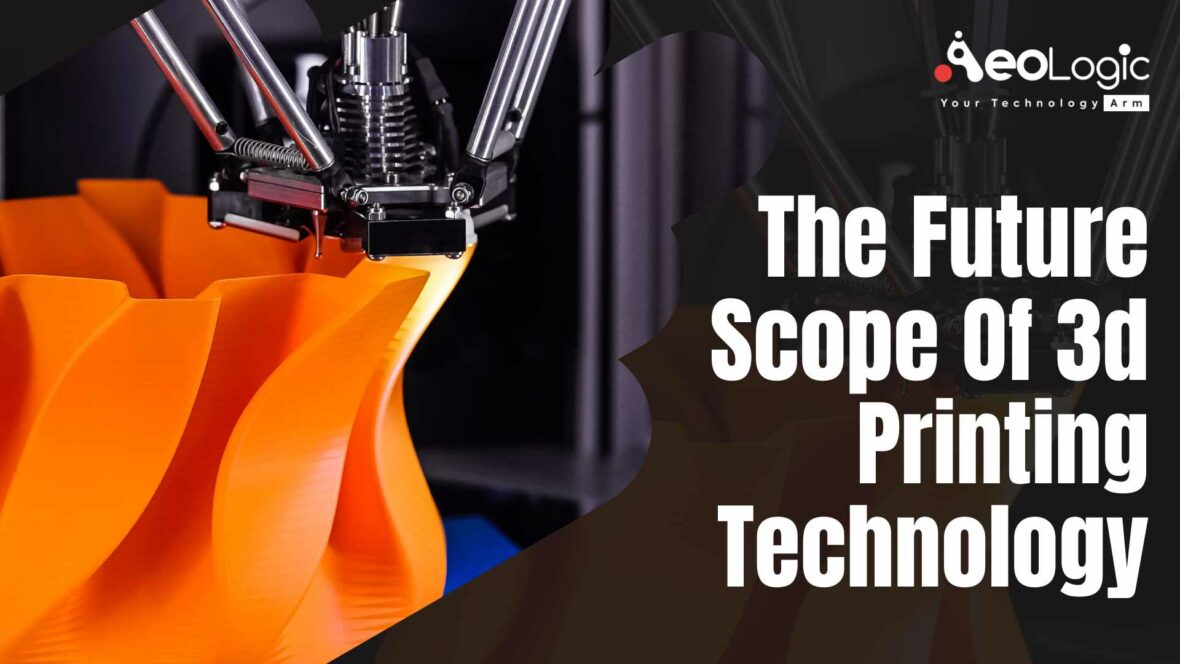3D printing is rapidly becoming a mature manufacturing technology. It’s helpful for prototypes. And is offering significant benefits for small and medium-sized production runs. However, just how much will 3D printing change manufacturing and supply chain. As well as how will the technology get there. Here are six future scope of 3D printing technology.
Also read: How to Utilize AI in Additive Manufacturing
Following are the future scope of 3D printing technology:
1. 3D Printing Will Be Bigger, Faster, and Cheaper.
3D printing technologies are developing rapidly. Increasing demand for specialized materials to fulfill the required properties of end parts will be continuing to drive developments in the range and types of choices available. The answer for the new generation of printers, particularly industrial-grade solutions, will be the ability to handle a higher range of advanced materials. This opens the door for businesses to leverage additive manufacturing in areas where they previously could not. Therefore, the future scope of 3D printing technology will be cheaper, faster, and bigger.
2. Additive Manufacturing Will Become Part of an Integrated Supply Chain Method.
To increase benefits, manufacturers require a large range of printers and materials and, most importantly, connections with other industry professionals. Furthermore, interoperability among different systems is becoming imperative to boost the potential of 3D printing. Automation in post-processing and production as well as in integrated usability will be important trends this year and in the future. Additive manufacturing will be offering a whole new supply chain approach as part of a secure and holistic platform in which the individual steps are merged into one process. Ranging from concept to materials, production, digital inventory, and delivery. As manufacturers are striving toward Industry 5.0, services offering a fully automated, still secure, platform will be necessary.
3. Working Together is Important.
Partnerships will be creating mutual benefits and synergies that will lead to a greater product for customers. In 3D printing, this has proven to be a major enabler to scale industrial production. However, to develop further, there is a need for further holistic collaboration. Additionally, shared production data can lead to enhanced printers and materials for all. Likewise, close collaborations are important for accomplishing the best solution. Therefore, working together is important for the future scope of 3D printing technology. An ecosystem where service providers, material producers, and print farms globally are networked is the next step to building a better service.
4. There Must be Ways to Provide Quality and Cybersecurity Assurance.
The future scope of 3D printing technology is continuing to transform today’s industries, with companies adopting the technology for more and more of their needs. Thereby giving rise to a more integrated production landscape. However, for industrial production, businesses must ensure that their 3D-printed parts meet the necessary quality necessities. Moreover, data ownership will be playing a crucial role. Furthermore, intellectual property needs to remain in the right hands. As manufacturing is progressing into the digital era, data management will be critical.

In terms of quality assurance, it’s significant to carefully choose production partners, check their potential and ensure repeatable fit-for-purpose parts. Further steps are needed to make sure design data is stored in the right hands. By gathering manufacturing data and analyzing it, mistakes can be detected rapidly.
5. 3D Printing Will Boost Supply Chain Resilience
As technology is developing, additive manufacturing’s role in solving these problems will only maximize. Because 3D printing production can be situated closer to the customer location, manufacturing organizations leveraging this technology can create stronger, shorter, more resilient supply chains. However, physical inventory is a weak point in any supply chain. But with printing on-demand ability, inventory is becoming digital. Manufacturers and engineers can send the design file to the 3D printer closest to the next step in the supply chain. Whether it is the manufacturer getting the component or the consumer receiving the final product. Then, there is less requirement to store and incrementally shift inventory. Thus, minimizing carbon dioxide emissions and increasing supply chain resilience.
6. Additive Manufacturing Will Drive Sustainability Forward.
The future scope of 3D printing technology will be driving sustainability forward. Requirements of end customers, official regulations, and even moral duty are building sustainable production and supply chains augmenting necessary. This trend also is there in 3D printing, which can decrease waste during the production process. By particularly designing a part for 3D printing, engineers can gradually minimize the weight of the end part. Therefore, mitigating the material required for production. It can decrease the number of parts in the associated waste and inventory. Moreover, there will be progress in sustainable 3D printing materials such as reusable, recycled, and biodegradable plastics.
Also read: Automation Boosts Additive Manufacturing Production
Conclusion
Therefore, it goes without saying that the future scope of 3D printing technology is bright. Also known as additive manufacturing has created a place for itself in the Indian market and the coming days are projected to see a bigger expansion.
Contact us to book your free 60-minute call!
FAQs
What is the scope of 3D printing?
With the right planning, engineering, and material development level, 3D-printed parts can smoothly transition into rate production equipment, like injection molding. Generating a part on-demand is enabling manufacturers to produce 3D-printed parts as required instead of pulling the part from a supply warehouse.
What is the future of printing technology?
This developing digital printing technology can be merged with some of the best ink solutions as well. They are even making conductive ink and use nano-particles.






